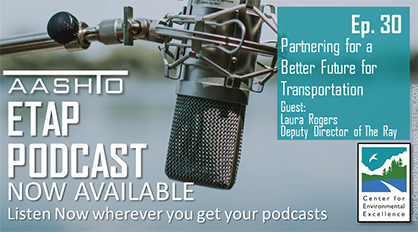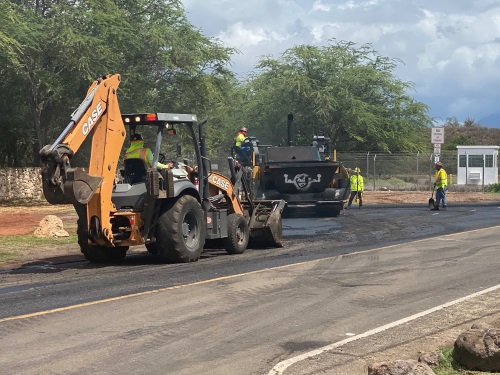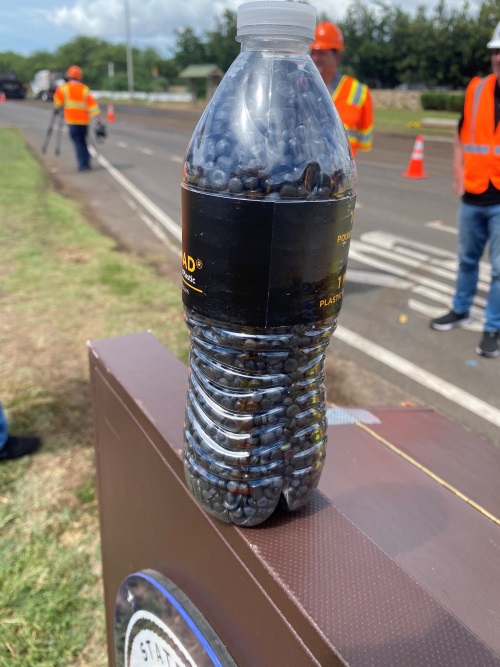FEDERAL ACTION
Dr. Shawn Wilson, Louisiana DOTD: Making the Most of Transportation Change – AASHTO Magazine
FHWA Issues New Vulnerable Road Users Guidance – AASHTO Journal
Biden has ambitious infrastructure goals. Made-in-America rules could slow them. – Vox
Climate Change Realities Drive Federal Resilience Planning – Pew
Feds Call for State-Local Cooperation on Pedestrian and Cyclist Safety – Route Fifty
COVID-19
MassDOT offers jobs back to some workers fired over COVID vaccine mandate – WBZ-TV
FAA Ends COVID Minimum International Flight Waiver at NY, DC Airports – Reuters
INFRASTRUCTURE RESILIENCE AND SUSTAINABILITY
Transportation Electrification: Where We Are And Where We’re Headed – Nick Nigro, Atlas Public Policy – ITE Talks Transportation (podcast)
How pavement can help cool overheated cities, even in chilly Massachusetts – WBUR Radio
Appalachian Regional Port looking toward expansion as growth continues in Northwest Georgia – Polk County Standard Journal
10 years after Sandy, Hudson River tunnel just as vulnerable to flooding – and a fix isn’t coming until 2038 – Gothamist
Renters face charging dilemma as U.S. cities move toward EVs – AP
North Carolina Moves to Electrify Trucks and Buses, Gaining Economic and Environmental Advantages – Southern Alliance for Clean Energy (commentary)
Four Regions Of New Jersey Release Climate Resilience Action Plans Following Community Development Process – NJ Department of Environmental Protection (media release)
AIR QUALITY
The New World: Envisioning Life After Climate Change – New York Times
Coordinating climate and air-quality policies to improve public health – MIT
OIG identifies opportunities for Amtrak to reduce locomotive idling, more easily achieve emission reduction goals – Amtrak Office of Inspector General (media release)
ENVIRONMENTAL JUSTICE
Critics of Move PGH pilot program say it’s not adequately serving disabled, low-income residents – Tribune-Review
Baltimore leaders apply for federal funding to demolish “Highway to Nowhere” – WMAR-TV
Readout of the First USDOT and FTA Roundtable Discussion on Asian American, Native Hawaiian, and Pacific Islander Transit Experience – USDOT (media release)
NATURAL RESOURCES
California farmers look to tomato crops as new source for producing clean drinking water – CBS News
While clean water isn’t a partisan issue, it is a faith issue – Religion News Service (commentary)
CULTURAL RESOURCES
WVDOT, Department of Arts, Culture and History celebrate five years of Roads to Prosperity with exhibit at State Culture Center – West Virginia Department of Arts, Culture & History
Mural painting brings awareness to pedestrian safety on 6th Avenue – Arizona Public Media
Robert Moses Returns to New York City, in Theatrical Form – Bloomberg
The intersection of historic preservation in D.C. and urban planning – Washington Business Journal (commentary)
HEALTH AND HUMAN ENVIRONMENT/ACTIVE TRANSPORTATION
Completed pedestrian safety projects in Cincinnati cut down on accidents – Spectrum 1
Dementia: Can traffic-related air pollution increase risk? – Medical News Today
Cyclist crash numbers raise questions about OKC infrastructure – Oklahoma City Free Press
Experts Suggest Taxing Large Vehicles Could Curb Pedestrian Deaths – Jalopnik
Evanston Transit Alliance exploring ways to connect local bike trails – Evanston Roundtable
How will Virginia’s new Office of Trails spend $89 million? – Virginia Mercury (commentary)
TRB RESOURCES/ANNOUNCEMENTS
Managing Severe Storms and Environmental Impacts – TRB (Webinar)
State DOTs Perspective on Pavement Resilience – TRB (Webinar)
Factors influencing bike share among underserved populations: Evidence from three U.S. cities – Transportation Research Part D: Transport and Environment
FEDERAL REGISTER NOTICES
BNSF Railway Bridge Across the Missouri River Between Bismarck and Mandan, North Dakota; Final Environmental Impact Statement – Coast Guard (Notice of availability)
Proposed Consent Decree, Clean Air Act Citizen Suit – EPA (Notice; request for public comment)
COVID–19 Related Relief Concerning Operations at Chicago O’Hare, John F. Kennedy, Los Angeles, Newark Liberty, New York LaGuardia, Ronald Reagan Washington National and San Francisco Airports for the Winter 2022/2023 Scheduling Season – FAA (Expiration of the limited, conditional waiver of the minimum slot usage requirements)
Noise Compatibility Program for Duluth International Airport, St. Louis County, Minnesota – FAA (Approval of a Duluth International Airport (DLH) noise compatibility program)
Inland Waterways Users Board Meeting Notice – U.S. Army Corps of Engineers (Notice)
Notice of Teleconference Meeting of the Exxon Valdez Oil Spill Public Advisory Committee – Office of the Secretary of Interior (Notice)
Pipeline Safety: Liquefied Natural Gas (LNG) Research and Development (R&D) Public Meeting and Forum – Pipeline and Hazardous Materials Safety Administration (Notice)




